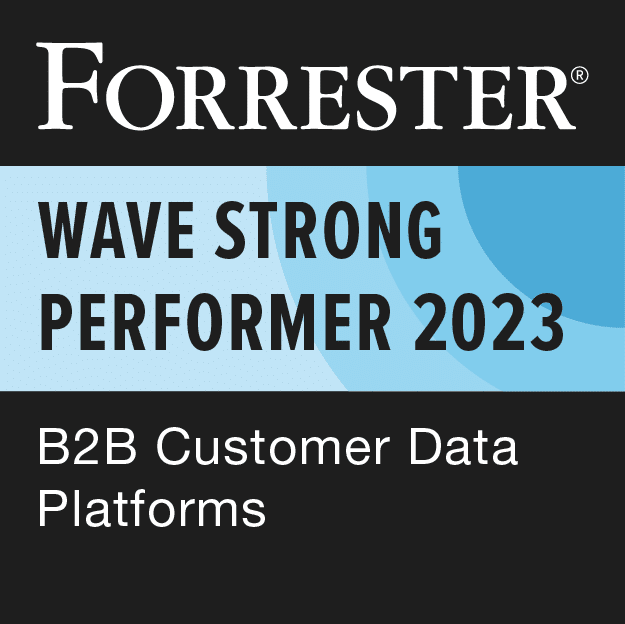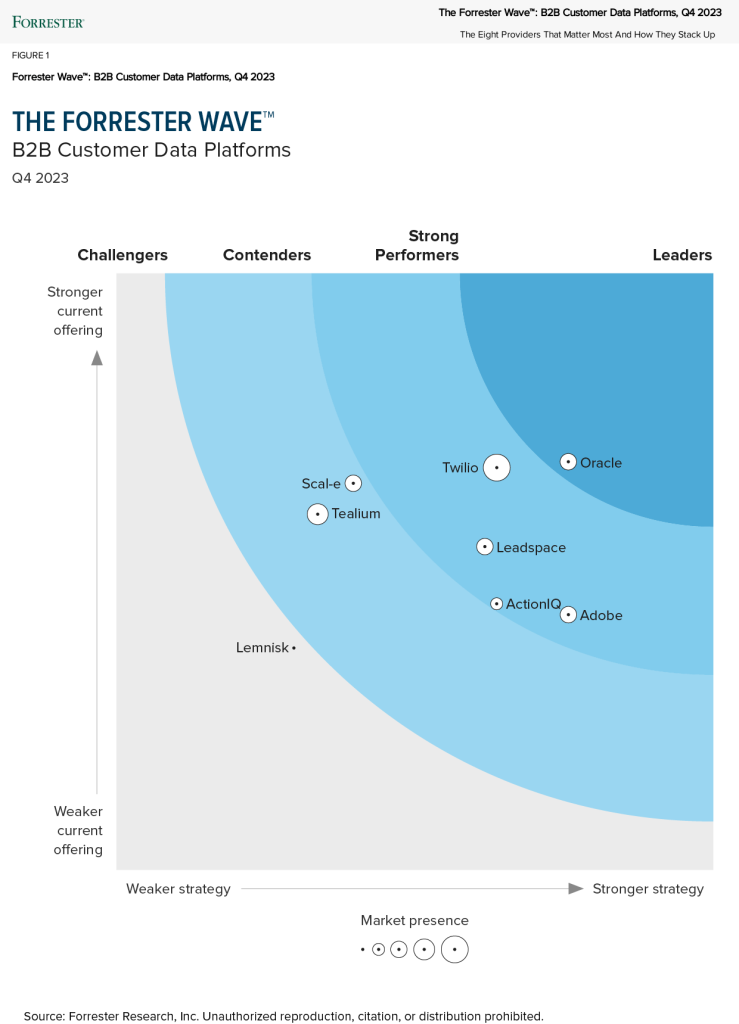Marketing effectiveness is measured by how well a company’s marketing strategies increase its revenue while decreasing its costs of customer acquisition. You will always win the day if your marketing continually lowers the costs of finding and winning business, while also increasing the value of that business.
However, how does one go about measuring both outcomes? What metrics, benchmarks, and key performance indicators must be in place to track marketing effectiveness?
Marketing Effectiveness in an Outbound Environment
For decades, the only means of reaching customers was through outbound marketing approaches, which made measuring marketing effectiveness incredibly difficult. These strategies were far from precise. Determining the impact of marketing strategies on revenue and the costs of customer acquisition was nowhere near accurate.
Companies spent a tremendous amount of marketing capital on TV, radio, print, magazine advertisements, and billboards, all in an attempt at carpet-bombing their market with product messaging and branding information. They simply could not determine which strategy worked best. They just knew that all of them played a role in driving revenue. Determining marketing effectiveness on outbound strategies was often guesswork and largely based on assumptions.
Marketing Effectiveness in an Inbound Environment
In today’s digital world, measuring marketing effectiveness doesn’t need to be a cumbersome affair plagued by errors and inaccuracies. Inbound marketing has all but eliminated those tracking issues of the past. Luckily, today’s marketing teams have access to dynamic data that automatically updates as signals change. Such dynamic data offerings, in combination with advanced reporting and analytics tools, makes it easier than ever to calculate the effectiveness of marketing strategies. However, that data must be cleansed and enriched at every step of the process so that the information and answers it provides are clear and concise. Even the most advanced analytics tools and AI-models will point you in the wrong direction if the underlying data being analyzed is incorrect or outdated.
Inbound marketing has empowered today’s enterprises to take their marketing effectiveness measurement a step further. It is not just about generating leads for sales. It is not just about a one-time sale. Closed-loop marketing means companies can now determine marketing’s reach long after the lead was generated to repeatedly close business. With accurate, dynamic data, predictive AI-models and Machine Learning, marketing teams can optimize their revenue pipeline as they automatically find, create and prioritize closeable business over and over again. The focus now is to define the role marketing plays in pushing a prospect to purchase.
Adopting a closed-loop mindset means a company has a more accurate depiction of its marketing return on investment (ROI). Is it more accurate than strategies of the past? Yes, it is, but only if you continuously enrich your data for accuracy and completeness – ensuring the information being analyzed contains actionable insights. That means defining the role marketing plays from lead generation all the way to order fulfillment and always enriching your marketing data so that the data-driven decisions you make today, and in the future, are the right ones.
1. Define Your Marketing Campaign and How You Will Measure Success
You are running a marketing campaign across multiple digital platforms to push a new product to market. You are using email marketing, content marketing, social media and digital advertising to drive new prospects to a specific landing page on your website. You have a well-designed landing page and a simplified lead capture form that is sure to increase conversions. However, you know it is not enough just to convert. You need more.
Marketing effectiveness for this campaign will be measured by the short-term and long-term increase in revenue and by your company’s costs of customer acquisition. The short-term increase in revenue is easy to ascertain. However, determining the long-term impact on revenue will be a bit more involved.
The good news is that you already have some answers. Your existing marketing data tells you what the typical reordering time is with new customers during a given month, quarter, and year. Constantly enriching that data improves its accuracy and makes it more relevant. In fact, the more up-to-date your marketing data is, the more accurate your analysis will be.
You also know how effective your customer retention strategies are and what your customer life-time value (CLV) is for specific customers. Each of these play a role in defining marketing effectiveness because it helps you determine both a short-term and long-term impact from the business you have won through your marketing campaign.
2. Define Your Marketing Channels
It would be easy if you could just focus this analysis on one market channel. Unfortunately, that won’t work. It is a guarantee that existing customers will buy this product just as easily as any newly-converted lead. Therefore, you need to itemize the marketing channels for this campaign so that you can truly define marketing effectiveness.
- Existing Customers/Direct Customers: Fortunately, you will not have to concern yourself with your costs of leads or costs of customer acquisition. In fact, closing existing customers may only involve a single email campaign or content marketing piece.
- Paid Search: Driving targeted traffic to your landing page through digital advertisements is critical to getting your product off the ground. How much did you spend each month on digital advertising and how many conversions were generated? How many customers came from those conversions? Again, it is not just about your cost of leads and conversions, it’s ultimately about how much it costs to get a customer.
- Email Marketing: This is a digital strategy that can be split up by market segment, customer segment, or buyer persona. You can determine an email campaign’s success by comparing click-through rates (CTR), bounce rates, and conversions. Focus on how well your call-to-action performs within your email campaign.
- Content Marketing: If your content is well structured, engaging and interesting, then your call-to-action (CTA) should lead to an easy conversion. If not, then make the appropriate changes.
- Social Media: You can easily determine how many inquiries resulted from social media and how many leads came from gated content on social media. Now you need to determine how many leads were converted and how many conversions became customers.

3. Capital Expenditures by Marketing Channel: Key Performance Indicators (KPIs)
Tracking your capital expenditures by marketing channel is critical to determining your costs of customer acquisition. Your key performance indicators (KPIs) play a vital role here. For instance, you know what an acceptable click-through-rate (CTR) is on each of your marketing channels based on how those channels performed for your company in the past.
You can break down your KPI by week, month, or quarter. At each step, you are enriching your data and cross-referencing it against past performance to make sure your marketing campaign is on track. Your KPIs allow you to track how much traffic is generated by channel, how many conversions occur, and how long it takes to turn those conversions into paying customers.
You are now defining your costs of traffic generation, your costs of conversions, and your cost of customer acquisition for each of your marketing channels. You are using your KPIs to make sure you are on track and you are cross-referencing and enriching your marketing data at every step.
4. Customer Life-Time Values: Short-Term and Long-Term Impact on Revenue
The short-term impact on revenue from your campaign is easy to define. Take the number of new orders received multiplied by the number of new customers won. However, it is the long-term impact that will determine the overall success or failure of this campaign. That calculation is a little more involved.
- Calculating CLV: The simplest way to calculate CLV is to multiply the average profit contribution annually per customer by the average number of years those customers buy from your business. Your costs of customer acquisition are then deducted from this total to give you your CLV.
- Customer Retention Rates: Your company knows how to keep customers coming back for more. You are able to keep 50 percent of all new customers you win.
Determining long-term returns on revenue involves calculating customer life-time value (CLV) and accounting for your customer retention rates. Suppose your average profit for each customer is $400 over a lifetime of three years. Your costs of customer acquisition include summarizing all the costs of each marketing channel. That cost is $50. That means your CLV is $350.
Your marketing campaign generated 100 new customer orders with an average order size of $80. Your short-term revenue is $8000 which is 100 new customers multiplied by $80. With a customer retention rate of 50 percent you are able to generate 50 repeat customers from this campaign. That 50 is multiplied by $350 (CLV) to determine the long-term revenue your campaign will generate. This gives you $17,500 which is then combined with $8,000 to give you a total of $25,500 as revenue from this campaign.
Data Enrichment Maximizes Revenue and Drives Down Costs.
As mentioned earlier, accurate, up-to-date data is critical for producing valuable data-driven insights. Consider, how do you know when a particular piece of information is outdated? Historically, we wouldn’t know. Our best bet would be to enrich the underlying data with newly published static data as often as possible to ensure it’s as up-to-date as possible. Enrichment makes it easier to interpret the information. Achieving and leveraging real-time, or dynamic data, is critical to maximizing your returns across all marketing channels.
Enrichment also empowers you to make better decisions about cost management, implementation, and course correction. The more accurate and thorough your data, the easier it is to make more informed decisions. This provides a road-map to driving down your marketing costs by allowing you to analyze results at a microscopic level. You know where traffic comes from, when prospects were converted, how long it took for conversions to place their first order, and how long it took first time customers to come back. However, none of that data works if you are not enriching it, comparing it and cross-checking it.
Achieving dynamic data through enrichment hasn’t always been that simple.
The problem? It takes a lot of data to build the buyer profiles that marketing teams need to effectively target closeable business. Procuring all that data from numerous static data vendors gets expensive – quick. Then manually blending it all together with your existing data is cumbersome, time-consuming and error-prone. This process of having to repeatedly buy static datasets to keep your data environment up-to-date is costly, tedious and often neglected.
The solution? Achieve dynamic data with Leadspace Profiling. Unlike standard data providers, Leadspace is not a static database. Leadspace ingests all of your existing first-party data, enriches it with 30+ embedded third-party B2B sources and unifies it all, automatically creating dynamic buyer profiles for people and companies with full hierarchies. Each of our 200+ fields cross-reference multiple sources to populate the most accurate and up-to-date values, and can be scheduled to automatically update as people and companies change, ensuring you’re relying on the most up-to-date, operationalizable buyer data available.
Conclusion:
The days of measuring marketing effectiveness solely by the number of leads generated are long gone. It is not just about conversions. It is not just about closing that first sale. Marketing effectiveness is measured by the short-term and long-term revenue generated by a campaign and by how well the company’s costs of customer acquisition are lowered during that campaign. Any metrics for measuring this depend on healthy, up-to-date underlying data, making modern dynamic data solutions very appealing to marketing teams looking to maximize the effectiveness of their campaigns for measurable revenue generation. See how a powerful Customer Data Platform (CDP) can contribute to your marketing effectiveness, download the Ultimate Guide to Driving Revenue with a B2B Customer Data Platform.


